6 Stylish Studebakers up for Grabs
Dr. Karl E. Peace, a biostatistician, author, and philanthropist who has worked in public health for decades, has donated his 32-car collection to benefit Georgia Southern University. One of Dr. Peace’s previous contributions, an endowment in honor of his late wife, Dr. Jiann-Ping Hsu, allowed the university to establish a college of public health in her name.
Hagerty Marketplace is hosting the auction of The Dr. Karl Peace & Georgia Southern University Collection, the majority of which are Studebakers.
We can’t remember the last time we saw so many of South Bend’s finest under one roof. While there are a couple of post-Studebaker Avantis, a Chevy, a Buick, a Mercury, and a couple of Fords among the collection up for sale, let’s take a look at some of our favorite Studebakers that we’ll be paying particularly close attention to as the auctions come to a close starting on June 11.
1953 Studebaker Champion Regal Starliner
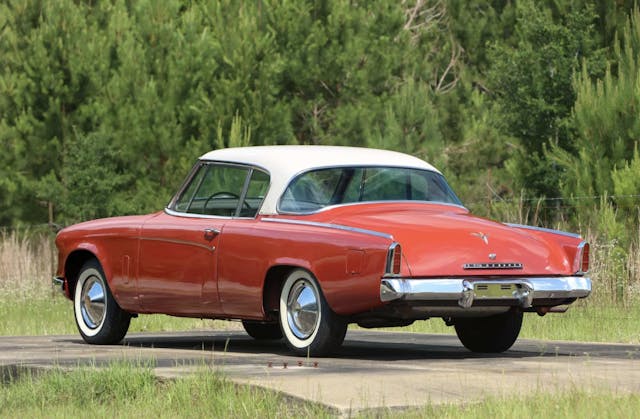
The 1953 model year marked the first year of the low, sleek Starliner coupes, penned by Robert Bourke at Studebaker’s design studio, which was headed by the legendary Raymond Loewy. Studebaker coupes of this era are a favorite among land speed racers because they perform much better than their peers, and it’s easy to see why: Their streamlined shapes were unlike anything else on the road. Later Studebaker Hawk variations expanded on the theme with fins and extra trim—we’ll be highlighting some of those as well—but the original Starliner is one of the best iterations and proves that sometimes less is more.

1957 Studebaker Golden Hawk

Studebaker’s most powerful and prestigious model at the time, the Golden Hawk debuted in 1956 with 352 cubic inches of Packard V-8 power, showing the fruits of the brand’s merger with Packard two years prior. For 1957, a Studebaker 289 replaced the larger Packard mill, but the output was the same 275 horsepower as before thanks to a centrifugal supercharger. These luxurious winged coupes are a rare treat, and because a 1956 model participated in the famed Mille Miglia, this one in particular could also be eligible for entry, adding another reason why a collector might see this Golden Hawk as the prize of Dr. Peace’s collection.
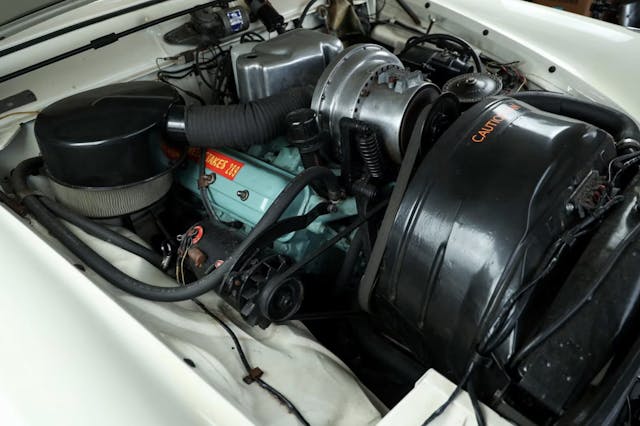
1960 Studebaker Champ Pickup
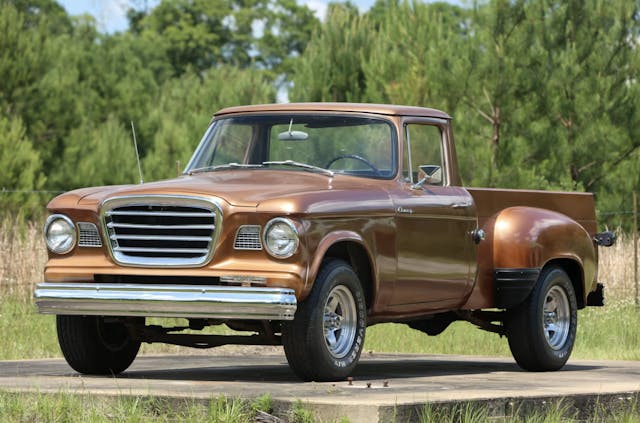
Studebaker didn’t have the deep pockets of its Big Three rivals, so it had to get creative in the late ‘50s when the brand needed to replace its aging pickup truck line that had been in service since 1949. Using the same chassis and stepside bed as its previous light-duty pickup, Studebaker cobbled a truck cab together by shortening a Lark sedan. We’ve gotta say, for something built on a shoestring budget, the styling works pretty well. 1960 marked the final year of a 170 inline-six as a flathead; it got an overhead-valve cylinder head in 1961. These pickups are a rare sight and would likely gather quite a crowd at any car show. Combine that with its fantastic gold paint and this one was an easy pick for our list.

1962 Studebaker Gran Turismo Hawk
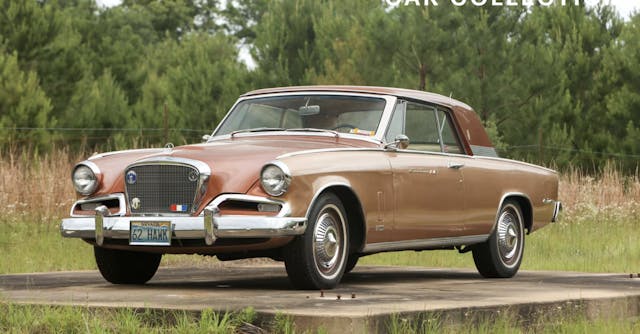
The Gran Gurismo Hawk represented the final evolution of the sleek Starliner coupe into a more formal and stately touring car. The prominent grille might be a bit brash, but the new greenhouse gave the Gran Tursimo Hawk an all-new profile that matched its more upscale ambition. Inside, a plush interior kept up the theme. This one is powered by a 289 V-8 and a three-speed manual. Membership to the Brown Car Appreciation Society is complimentary.

1964 Studebaker Avanti
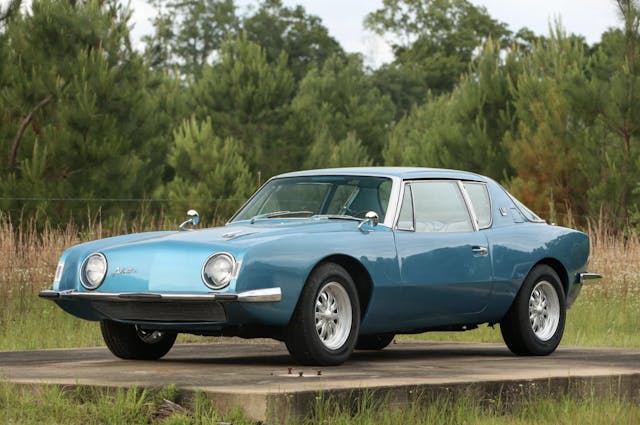
Plenty of Studebaker’s designs were vastly different from anything else on the market, yet we can’t help but think that the Avanti was perhaps the most ambitious effort the brand ever made. Its sleek fiberglass body is unmistakable. Studebaker-produced Avanti models were powered by 289-cubic-inch Studebaker V-8s, some with optional Paxton superchargers like the Golden Hawk. This one is naturally aspirated and backed by a four-speed manual transmission. Finished in blue over a blue and white interior, this example looks fantastic in photos, although a few mechanical and cosmetic issues need sorting out. It’s still a well-preserved example of a sporty personal luxury car bursting with style.

1964 Studebaker Daytona Convertible

Like the Champ pickup we mentioned previously, the Daytona used a lot of the mechanical underpinnings of its predecessor. In this case, that was the compact Lark, the same car that served as the basis of the Champ. Renowned designer Brooks Stevens was responsible for completely redesigning the Daytona to compete with rivals like the Dodge Dart, Chevy Nova, and Ford Falcon. We’d say he succeeded, as the lines look clean and sharp, even today. Just 416 Daytona convertibles were built in South Bend before production moved to Ontario, so this represents one of the last U.S.-built Studebakers in the company’s history.
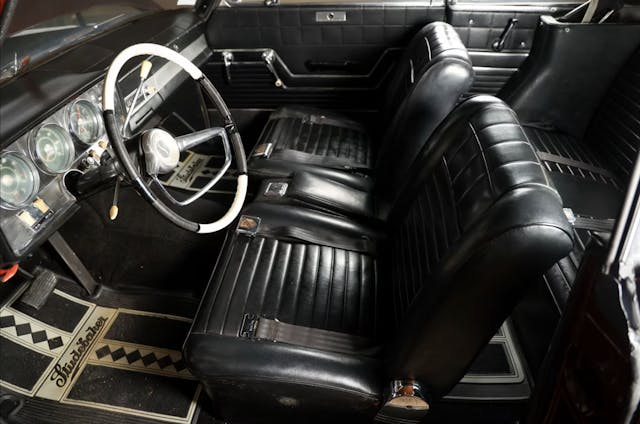
There are plenty of other Studebakers in the Dr. Karl Peace & Georgia Southern University collection—plus the odd Chevy, Ford, and Buick. If you’ve got room in your collection for a bit of American car history outside of the Big Three, then you might consider one of South Bend’s stylish alternatives and help Georgia Southern University in the process.
***
Check out the Hagerty Media homepage so you don’t miss a single story, or better yet, bookmark it. To get our best stories delivered right to your inbox, subscribe to our newsletters.



Thank you for publishing this article! It’s always nice to see my alma mater mentioned in print, even though I graduated back in the Pleistocene era when it was still Georgia Southern College.
I had never seen a ’64 Daytona Convertible – didn’t even know they existed – before viewing these photos. Thanks!
I bought a new Lark Daytona convertible in 1964. It had the same burgundy color as the one featured in this article. It came with a V8, the first V8 I had ever owned. I was 20 years old at the time. (I wish I still had that car)
Hi, An Avanti would be my First and Only choice. Really like them! Thanks for the views.
A close friend and fellow club member had a gold colored supercharged Daytona conv. before he passed 2 years ago and I believe his son or brother now owns it?
So far I haven’t seen it back on the show seine sense but I’m hoping for the best this year.
I miss my Nam Brother Fred and seeing his ride very much and only hope the family takes as good care of it as Fred did.
This one had every option available , down to the swing out “vanity thingy ” which is the only other one I’d ever seen before.
Myself I had a Golden Hawk years back when they were just another used car and kick my butt I ever sold it, but hind site being 20/20 , sadly that is one of the ones that got away before I realized just what I had.
Quite a rare car, about 400 built I believe.
I did see a 1964 Lark Daytona Convertible once on the Dodge used car lot in Appleton Wisconsin. A friend was looking at it. I really thought it was cool, and the dual circuit master brake cylinder was a surprise to me. In many ways Studebaker was actually ahead of the rest of the American automobile manufacturers. I often wonder why the didn’t succeed in the market place, especially considering how long they had been around and how successful they had been before the 1950’s. Despite how great Packard had been, merging with Packard was a mistake, although both were doing poorly.
I liked the article.I did not know about the1960 Studebaker Champ pick-up truck.That was back when the United States had a lot of manufacturing companys,where it was made here in America.It makes me sad when I think about that.
My uncle had a red Power Hawk iin 1957.what I car. I was 13 yrs old. Thank you bringing back wonderful memories
Ime now turning 80 yrs old.
I am rebuilding 2 Studebaker cars, a 1963 Studebaker Avanti 289 supercharged automatic and a 1962 Studebaker Hawk GT 289 3 spd od. I am assembling the Avanti motor with as many OEM parts I can find. I am searching for a 4 spd transmission for the Hawk. The Automatic for the Avanti is already rebuilt and will be installed with the motor. Hope to be done for July/August.
That ’53 Champion is still one of the best-looking coupes ever built in the U.S., IMHO. I just love those lines.
Agree…. very understated…. Raymond Loewy at his best ! As a kid, I liked them when they were new…. they looked ”very finished” the way there were no projections. Very smooth. Those were the days !
Although you may well be right about the looks, I’m partial to the 1950 Champion 2 door. My first cross-country ride, Menlo Park, CA to Cambridge MA was in one of those. I was only 4, but I have a lot of memories of that car, including–on the x-country trip–how Mab, the 75 lb airedale would sometimes stretch across the back seat, pushing my 6 year old brother and me onto the floor, and towards the end of that trip, my father telling us we were going to go under the Hudson River, through the Holland tunnel, my inability to comprehend how we could accomplish that feat, and my marveling as we sped dry through the tunnel.
That was the Studebaker’s fourth x-country trip. My father had driven it cross country three times in the first year and a half that my parents had it–twice the summer I was born–Seattle to Boston and back. My mother, my brother and Mab flew both ways, and I flew home with them at 2 months old.
My father bought a ’53 Champion new. He was in the Air Force, and we took it to the England in ’56. It would draw a crowd wherever it was parked. Later, in ’66, I drove it from TX to CA to college and back, barely making it while it burned a qt of oil every 100 miles in that flathead 6. I wish I still had it.
I drove a 1949 Studebaker while I was in high school. It belonged to a teacher and he asked me to take it out once in a while and you know what once in a while means to a teenage boy. Anyways, when I went to the gas station it was to fill up the oil and check the gas. My Father was a cop and the department bought new police cars, they were Studebaker Larks. He did not like them at all, besides being down on power and comfort, he could not even drive from one side of the city to the other side without filling it with oil. In 1953 I did lust after the new Studebaker and for many years after. I thought it was a jaw dropping design and still do.
Hmmmm. My dad had 3 Studes in a row and we drove them daily for 16 years in total. One Champion and 2 V8s. NO problems with the engines and certainly no oil consumption problems.
l have owned 12 Studebakers over the last 46 years, driving them many thousands of miles, including several 1000-mile trips. Only 2 had rebuilt engines, both of them flat head sixes (and only one of them needed it really badly). There were 4 V8’s and the rest sixes, of course. All were Studebaker engines, no GM’s. And NONE OF THEM were oil burners except for one ’54 that was badly over heated (it was made “acceptable” again with a new head gasket and the use of 15w40 oil).
The Studes your dad drove must have been abused badly – and then not repaired when they should have been. What police department would keep a car in service that burned that much oil!!
We had a ’49Stude pickup when I worked on the farm as a teenager. The rear cab corners had long departed ( this was about 1966) and we were putting in new gutters in the barn so I threw a fertilizer bag into each back corner then added a couple dhovels full of high strength concrete. A coat of blue Armor Coat paint and it looked like a decent truck again. For a lightweight truck with a tiny engine that little beast would HAUL. It wasn’t fast but with 3/4 to 1 ton of grain on board the boss got it into third before passing the line fence on the way to the mill. When the brake line blew he deciced to junk it and replace it eith a REAL truck – a ’62? chevy half ton. Anything over 3/4 ton and it squatted like a dog and it never got out of second on the way to the mill – never mind by the line fence. Sure, it would do over 70 empty – but that’s not what farm trucks are for!!!
Miss the ugly old Stud
No engine is flawless, but Studebaker engines were good!
The Studebaker Drivers Club ran a story a number of years ago that was told to a member by an engineer from the General Motors plant in Tonawanda, NY:
Just before the beginning of WWll, that engineer was involved in a government program in which all the light duty vehicle engines from various US manufacturers where tested and assessed for their possible use in the war effort. After the data they wanted was collected, they pushed the throttle wide open on each of them, left it there, and waited until either something important was launched threw a hole in the block or something else catastrophic stopped the very fast rotational motion very abruptly! The test was then considered “complete”.
The Studebaker Champion engine, the engineer said, was the ONLY engine to not “complete” the test. It just kept on going – for hours, l would think – until the engineers just decided that they had had enough and and shut it down!
l love hearing cool old stories!!
I couldn’t agree more about the 1953 Studebaker Champion. I had heard the only negative about the car was that the frame should have been stronger. True or NO?
The pillared coupes were less “rattley” than the B pillar-less hardtops for sure, but my ’53 coupe, with an original frame (and no “bat-wing” cross member that the ’54s got) feels solid and rattle-free on regular roads.
l heard that the engineers wanted to build in a certain amount of flex in the frame to give a smooth ride (handling was already better than average for the times because of a lower centre of gravity). But they went too far, especially with the Commander models with their heavy Stude V8s. The frame flexed too much with that engine installed and on the first cars down the line, the front clips could not be properly attached to the rest of the car! Yikes! A disaster! As you can imagine, it took them a couple of months to fix it!
But the fixed cars were fine, and the frames were beefed up over the years in the Hawk models as horsepower increased and handling became more of a deal in the market.
AMEN
(Regarding the first sentence.)
easy choices for me as we have a 53 champion hardtop and a 63 Avanti, so I would take the hawks
The late Lark ragtop ranks last, but still… The others: make it a 5-pak! The ’53 Starlite is the best looking post-war American car of all (other pretty designs learned from it!), the Avanti is right up there and was well named, Hawks are always a favorite (’62 the only one I’ve owned), and the Champ –despite the borrowed Dodge bed stampings, is very cool! The one my bro had came with a 5-speed (Eaton, or ??) with both granny and overdrive gears. Now if the Lark was a ’59-60… ! I M Humble O. Wick
And, why does this silly forum/machine so often give the ‘posting to fast’ message, when I haven’t posted in days? Fix this, Haggerty?!
From this lot I pick the Pickup but I always liked the Avanti.
For me, it has to be the ’53 Champion. The simple lines are just right. There is a good reason why there are so many Studebaker based cars running for land speed records at Bonneville: the streamlining is just right straight off the showroom floor.
the photo angle on the ’53 is much too low to flatter the car. try harder
Photos were apparently provided by the University; not by a Hagerty photographer. You can find about 70 shots of this car on their auction page.
The 53 is timeless beauty at it’s best.
My wonderful, late Mom was driving a 1953 Starliner before I unexpectedly arrived in the same year, eleven years after my Brother and seven years after my Sister. Hers was red but with a black top. I actually remember the car that was ultimately replaced with a 1956 Chevrolet Station Wagon because of me. Sorry Mom. While I am a car nut, my parents were anything but and yet my Mom had a 1949 Mercury convertible, a 1954 Chevrolet convertible, a 1963 Pontiac Lemans with the four cylinder and transaxle, and a 1969 Pontiac Firebird. Somehow they just stumbled into some of the most revered and interesting cars of the time.
NO Contest ……………….. the ’53 …….. my parents missed the boat, had new a ’50 and then a ’52. In ’53 they bought a Nash ………………………. I was too young then to educate them 🙂 Now I have a ’70 El Camino 454 with 4 speed Muncie